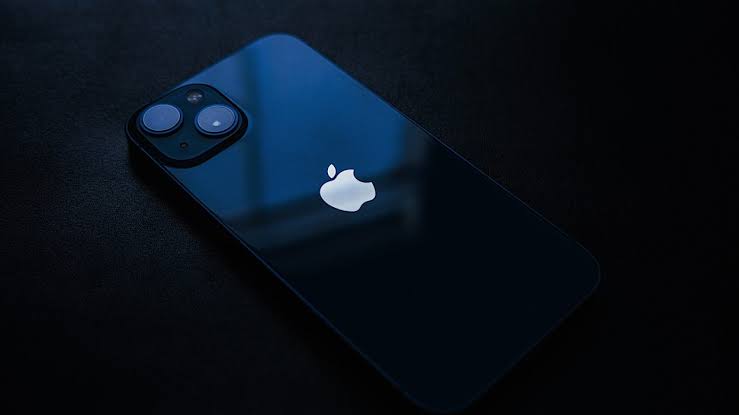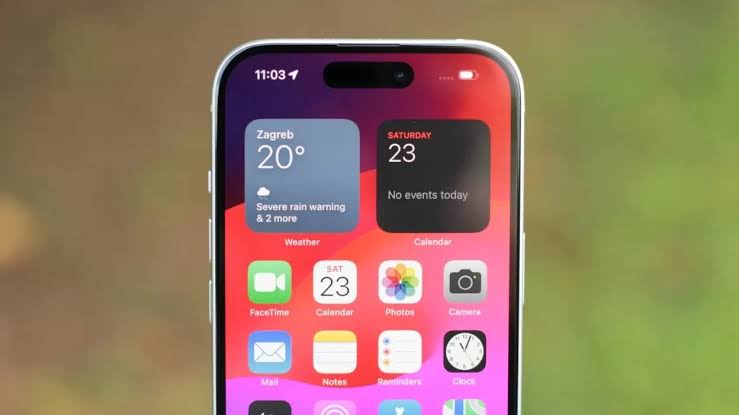Hiya, Tech Freaks! In this article, we’ll answer the popular questions “What Does Haptics Mean On An iPhone?” And also “How To Change Haptics On iPhone?.” You have alot to learn from this piece, make sure you read through carefully.
iPhone system haptics make your phone feel different when you press keys on the virtual keyboard.
It adds a fancy touch to how you interact with the phone, giving a subtle, noticeable response. Let’s talk about how this works and the cool things it does for your experience.
What Does Haptics Mean On Iphone?

Haptics on iPhone refers to the subtle vibrations you feel when interacting with your device.
It’s a form of sensory feedback that adds a physical dimension to your touch interactions, making them feel more natural and responsive.
Actions Of Haptics On iPhone?
Here’s a breakdown of what iPhone system haptics does:
- Provides Physical Confirmation: The slight vibration you feel when you tap a button, toggle a switch, or type on the keyboard lets you know your action has been registered, even without looking at the screen. This is especially helpful in silent mode or when using screen protectors.
- Enhances App Interactions: Developers can use haptics to create unique experiences within their apps. For example, you might feel a different vibration pattern when unlocking a door in a game compared to changing a setting in another app. This adds immersion and makes interacting with apps more engaging.
- Offers Accessibility Benefits: Haptics can be a valuable tool for users with visual impairments or dexterity limitations. They can rely on the vibrations to confirm actions and navigate the interface more easily.
- Customization Options: You can control the intensity of haptic feedback and even create custom vibration patterns for specific actions like ringtones or text notifications. This allows you to personalize your iPhone’s feel to your preference.
Types Of Haptics On iPhone
There are two main types of haptics on iPhone:
iPhone System Haptics
These are built-in vibrations that provide feedback for common interactions, like:
A. Tapping Buttons And Switches: You’ll feel a quick, light tap when you activate a button or toggle a switch.

B. Typing On The Keyboard: Each keystroke is accompanied by a subtle vibration, giving you feedback on your typing accuracy.

C. Alerts: You’ll get different vibration patterns for different types of notifications, like calls, texts, and emails.

D. Scrolling And Swiping: You might feel a gentle resistance when scrolling through content or swiping between screens, providing a sense of physical momentum.

E. Selection: You’ll feel a vibration when you select text or an item.

Custom Haptics
These are more complex vibrations that developers can use to create unique experiences within their apps. For example, you might feel:
- A different vibration pattern when unlocking a door in a game.
- A rumbling vibration when your character takes damage.
- A pulsing vibration when your heart rate increases in a fitness app.
Note:
You can also create your own custom vibration patterns for ringtones and text notifications.
Here Are Some Additional Details About The Types Of Haptics On iPhone
- Taptic Engine: This is the hardware component that generates the vibrations. It’s a tiny motor that can move very precisely, which allows for a wide range of vibration patterns.
- Haptic Feedback: This is the general term for the feeling of the vibrations.
- Transient vs. Continuous: Transient haptics are brief and compact, while continuous haptics are sustained vibrations.
How To Change Haptics On iPhone?
You can turn vibrations on or off, and you can make them softer or stronger. Follow these steps:
- Open Settings.
- Go to Accessibility.
- Choose VoiceOver (VoiceOver doesn’t have to be on).
- Scroll down and pick Audio.
- Select Sounds & Haptics.
- Use the slider under Haptics to change the strength.
- Turn Haptics on or off as you like.
Additional Haptics Options
Do you appreciate the gentle buzz on your phone? There are various options, similar to the sounds you hear, like the ding for incoming emails or the “swoosh” for sent ones.
You can decide whether you want a vibration, customize it to your liking, or choose none at all. This flexibility is particularly useful for individuals with hearing difficulties.
Here’s How You Can Do It:
- Open the Settings app.
- Navigate to Sounds & Haptics (on supported models) or Sounds (on other iPhones).
- To personalize tones and vibrations for different sounds, tap on a sound type, such as a ring tone or text tone.
- Select Vibration (Default is none).
- Take your pick from standard vibrations, create your own custom vibration, or opt for none.
Should iPhone System Haptics Be On Or Off?
It depends on your personal preference and how you prioritize different factors. Let’s talk about the benefits of either turning iPhone system haptics on or off.
Benefits Of Turning iPhone System Haptics On
- Enhanced Feedback: Haptics provide confirmation of actions, even without looking at the screen, especially useful in silent mode or with screen protectors.
- Immersive Experiences: Developers can use them to create unique sensations in apps, adding depth and engagement.
- Accessibility: Haptics can assist users with visual impairments or dexterity limitations to navigate the interface more easily.
Benefits Of Turning iPhone System Haptics Off
- Potential Battery Savings: While the effect is minimal, haptic feedback requires some battery power.
- Reduced Distraction: Some users find constant vibrations distracting, especially during games or media consumption.
Ultimately, the choice is yours! Experiment with both settings and see what works best for you.
Overall
Haptics play a crucial role in enhancing the user experience on iPhone by providing physical feedback and making interactions feel more natural and responsive.
Frequently Asked Questions
Does Haptic Mean Vibrate?
Yes, haptics on iPhone primarily refer to the subtle vibrations you feel when interacting with your device. However, it’s not entirely accurate to say they are synonymous.
Haptics encompass the entire sensory experience generated by the Taptic Engine, including subtle taps, rumbles, and textures.
These sensations go beyond simple vibrations and contribute to a more nuanced and realistic feeling of interaction.
Does Haptic Drain Battery?
Yes, using haptics does consume a small amount of battery power. However, the impact is quite minimal and unlikely to be noticeable in everyday use.
The battery savings from disabling haptics is usually negligible compared to other factors like screen brightness and app activities.
So, unless you’re facing extreme battery concerns, feel free to keep haptics enabled and enjoy the enhanced feedback and richer user experience they offer.





